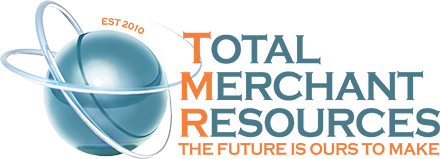
Understanding equipment leasing and its benefits can significantly impact the way we manage our business expenses. Instead of making large up-front purchases, equipment leasing offers a way to access the tools we need while preserving cash flow. This can be especially beneficial for businesses looking to stay ahead with the latest technology and equipment without the high costs associated with buying.
Leasing equipment can also simplify budgeting by providing predictable monthly payments, making it easier for us to manage our finances. This predictability helps ensure that we can allocate resources efficiently across various aspects of our operations. Moreover, leasing can provide tax benefits, as lease payments may be deductible as business expenses, reducing our overall tax liability.
By exploring the different types of equipment leasing options available, we can select the plan that best aligns with our business needs and goals. It’s also essential to consider several factors when choosing a leasing plan to ensure we get the most out of our investment. Understanding how to apply for equipment leasing successfully can help us secure the best terms and conditions, ultimately supporting our business growth and success.
Understanding Equipment Leasing and Its Benefits
Equipment leasing is a popular option for businesses needing to acquire new machinery or technology without the large upfront costs. By leasing equipment, we can spread the expense over a set period, making it easier to manage our cash flow. This approach helps us avoid the financial strain associated with purchasing equipment outright, allowing us to allocate funds to other critical areas of our business.
Leasing equipment also comes with tax benefits. The lease payments can often be deducted as business expenses on our tax returns, potentially lowering our taxable income. Additionally, leasing provides us with the flexibility to upgrade to newer models more frequently, ensuring that we always have access to the latest technology and equipment. This is particularly beneficial in industries where technology evolves rapidly.
Types of Equipment Leasing Options
When it comes to equipment leasing, there are several options to consider that cater to different business needs. First, we have the capital lease, where we agree to lease the equipment for most of its useful life. This type of lease is similar to buying because, at the end of the lease term, we often have the option to purchase the equipment at a discounted rate.
Another option is the operating lease. This is shorter-term and typically used for equipment that we expect to upgrade or return at the end of the lease period. With an operating lease, the leasing company maintains ownership of the equipment, and we enjoy lower monthly payments compared to a capital lease. Lastly, there are lease agreements specific to the seasonal nature of our business, allowing us to make payments that align with our cash flow patterns. Understanding these options helps us choose the best leasing plan to meet our business needs.
Factors to Consider When Choosing an Equipment Leasing Plan
When choosing an equipment leasing plan, several factors come into play. First and foremost, we need to evaluate the total cost of the lease. This includes not just the monthly lease payments but any additional fees that may be associated with the lease agreement. Understanding the full financial commitment helps us compare different plans and choose one that fits our budget.
Another crucial factor is the duration of the lease. We need to consider how long we plan to use the equipment and whether the lease term matches our needs. It’s also essential to understand the terms for equipment upgrades and returns. Some leases offer flexible upgrade options, which are beneficial if our business requires the latest technology. Lastly, we should consider the maintenance and repair terms included in the lease agreement. Ensuring that these services are covered can save us significant time and money in the long run.
How to Apply for Equipment Leasing Successfully
Applying for equipment leasing requires preparation and attention to detail. The first step is gathering all the necessary documentation. This typically includes our business financial statements, credit history, and a detailed description of the equipment we need. Having these documents ready will speed up the application process and increase our chances of approval.
Next, we need to present a compelling case for why we need the equipment and how it will benefit our business. This involves outlining our business plan and demonstrating our ability to make the lease payments. Additionally, building a strong relationship with the leasing company can be beneficial. Open communication and a clear understanding of their requirements can help smooth the application process. By following these steps, we can improve our chances of securing the lease we need to grow our business.
Conclusion
Securing the right equipment leasing plan is essential for business success. By understanding the benefits and options available, we can make informed decisions that support our goals. It’s important to consider all factors involved, from the total cost and lease duration to upgrade and maintenance terms. Preparing a strong application and presenting a compelling case is equally crucial for securing the lease we need.
At Total Merchant Resources, we specialize in helping businesses navigate the complexities of equipment leasing. Our expertise ensures you get the best terms and support for your specific needs. Don’t let the process overwhelm you—reach out to Total Merchant Resources today to discover the best revenue-based financing and let us help you find the perfect equipment leasing plan to fuel your business growth in 2024 and beyond.



